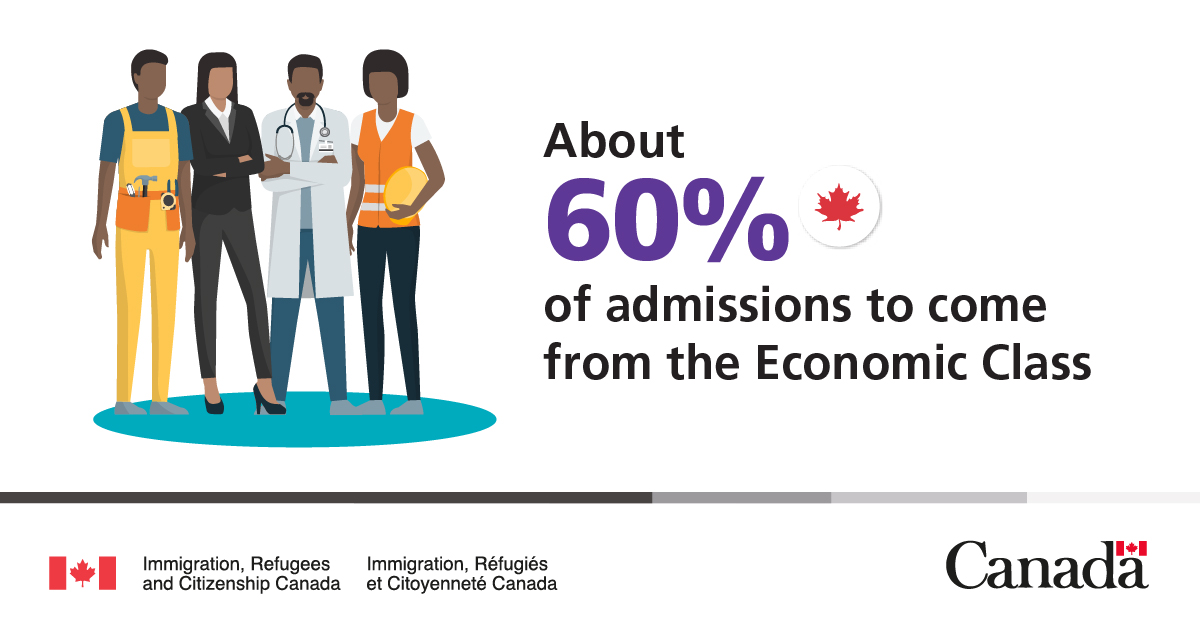

An Immigration Plan to Grow the Economy
November 1, 2022—Toronto—The Canadian economy has experienced one of the fastest recoveries from COVID-19 among advanced economies, but is now facing critical labour market shortages causing uncertainty for Canadian businesses and workers.
Today the Honourable Sean Fraser, Minister of Immigration, Refugees and Citizenship, released Canada’s 2023–2025 Immigration Levels Plan. The plan embraces immigration as a strategy to help businesses find workers and to attract the skills required in key sectors—including health care, skilled trades, manufacturing and technology—to manage the social and economic challenges Canada will face in the decades ahead.
Last year Canada welcomed over 405,000 newcomers – the most we’ve ever welcomed in a single year. The Government is continuing that ambition by setting targets in the new levels plan of 465,000 permanent residents in 2023, 485,000 in 2024 and 500,000 in 2025. The plan also brings an increased focus on attracting newcomers to different regions of the country, including small towns and rural communities.
Highlights of the levels plan include
With a focus on regional immigration, this plan builds on ongoing work to strengthen our immigration system and spread the benefits of immigration to communities across the country, including supporting the vitality of Francophone communities outside of Quebec.
Regional economic immigration programs, like the Provincial Nominee Program, are increasingly important to the sustainable growth of our country. That’s why this year’s plan outlines year-over-year growth so that we can continue to support provinces and territories in attracting the skilled newcomers they need to address the labour shortage and demographic challenges in their regions.
Over the past year, we’ve made improvements to address key challenges faced by those using the immigration system. We are continuing to streamline and digitalize our immigration system to further expedite processing and give users the experience they expect and deserve.
This plan helps cement Canada’s place among the world’s top destinations for talent, creating a strong foundation for continued economic growth, while also reuniting family members with their loved ones and fulfilling Canada’s humanitarian commitments.
“Last year, we welcomed the most newcomers in a single year in our history. This year’s immigration levels plan will help businesses find the workers they need, set Canada on a path that will contribute to our long-term success, and allow us to make good on key commitments to vulnerable people fleeing violence, war and persecution.”
– The Honourable Sean Fraser, Minister of Immigration, Refugees and Citizenship
“Canada’s Building Trades Unions are pleased with today’s announcement to increase immigration levels in Canada. Historically it has been through immigration that we have been able to grow our workforce, fill our union halls and build Canada’s infrastructure. Increased economic immigration is an important step to addressing labour availability across the country and we look forward to continuing to work closely with Minister Fraser and the federal government to find the solutions we need going forward.”
– Sean Strickland, Executive Director of Canada’s Building Trades Union (CBTU)
What are the requirements for becoming a Canadian citizen? To become a Canadian citizen, you…
Writing a letter of invitation doesn’t mean you’re legally responsible for the visitor once they…
As of January 28, 2025, Immigration, Refugees and Citizenship Canada (IRCC) has updated the health…
The Super Visa is a multiple-entry temporary resident visa (TRV), issued with a validity of…
The Super Visa is a multiple-entry temporary resident visa (TRV), issued with a validity of…
If you applied for a new temporary resident visa, or a study or temporary work…